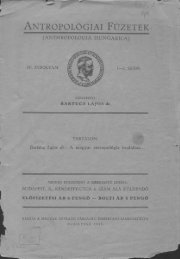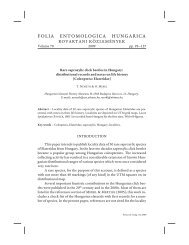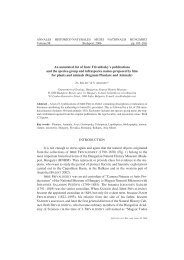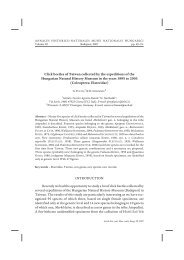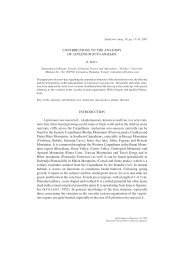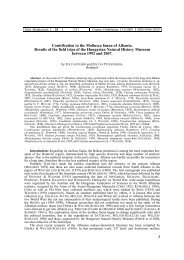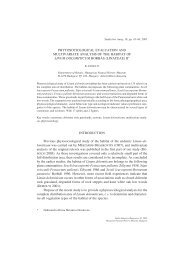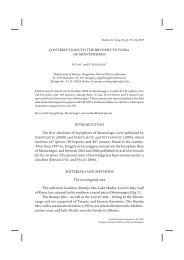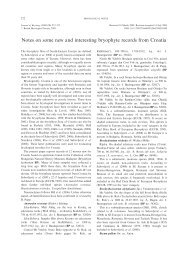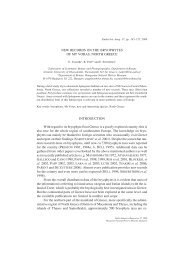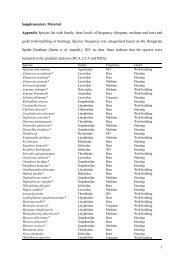THE GENUS SCHISTIDIUM (GRIMMIACEAE, MUSCI) IN HUNGARY ...
THE GENUS SCHISTIDIUM (GRIMMIACEAE, MUSCI) IN HUNGARY ...
THE GENUS SCHISTIDIUM (GRIMMIACEAE, MUSCI) IN HUNGARY ...
You also want an ePaper? Increase the reach of your titles
YUMPU automatically turns print PDFs into web optimized ePapers that Google loves.
<strong>THE</strong> <strong>GENUS</strong> <strong>SCHISTIDIUM</strong> <strong>IN</strong> <strong>HUNGARY</strong> 77<br />
Exothecial cells thin-walled, predominantly oblong; stomata absent; hairpoint<br />
short or absent, 0–0.3 mm, smooth or finely spinulose- denticulate;<br />
capsule-bearing branches not in fascicles; leaves 1.4–2.3 × 0.5–1.0 mm,<br />
obtusely keeled, symmetric, margins entire or irregularly denticulate<br />
immediately below apex<br />
subsp.<br />
(base-rich rocks in or beside<br />
rivers or streams, rarely submerged)<br />
Peristome absent or rudimentary (< 25 μm), stomata 3–6 per urn;<br />
hair-point usually long, finely denticulate; perichaetial leaves plicate;<br />
operculum mamillate; plants small to medium-sized<br />
(siliceous rocks)<br />
Peristome perfect, stomata 3–10 per urn; hair-point short or long,<br />
coarsely spinulose; operculum rostrate, but rostrum sometimes short;<br />
plants small<br />
Hair-point short, 0–0.45 mm, fine, flattened and mostly broadened towards<br />
insertion; peristome teeth strongly and irregularly perforated,<br />
pattern of exothecial cells not very irregular, stomata small, 3–8 per<br />
urn<br />
(exposed siliceous or base-rich rocks)<br />
Hair-point usually long, 0–0.8 mm, coarse, terete and narrow throughout,<br />
not or shortly and narrowly decurrent, in young leaves strongly<br />
spinulose with some very long spines (22–30(–75) μm); peristome<br />
teeth almost entire or narrowly perforated in 1(2) rows, exothecial<br />
cells forming an irregular pattern; stomata 6–8(10) per urn<br />
S. spinosum (exposed siliceous rocks)<br />
Leaf margin or dorsal side of costa in upper half of leaf with papillae or<br />
projecting cells (denticulate)<br />
Leaf margin and dorsal side of costa smooth (few papillae may occur at<br />
leaf apex immediately below the hair-point, in S. dupretii also further<br />
down)<br />
Studia bot. hung. 39, 2008



